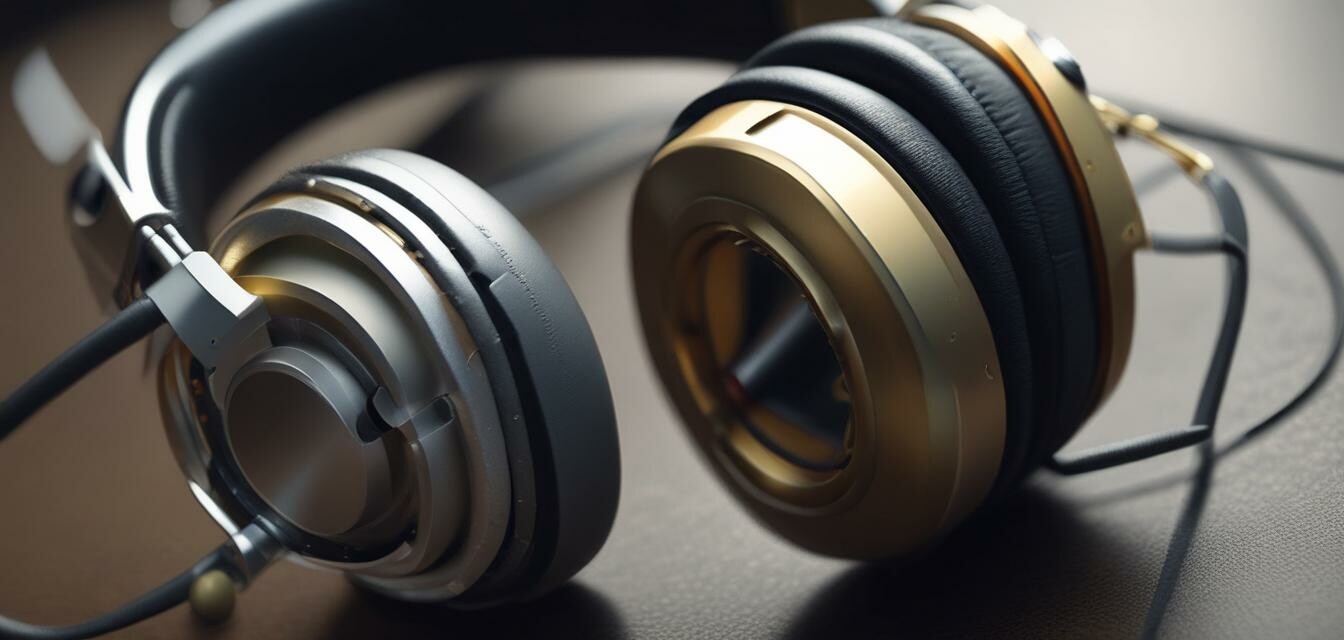
Analysing the Acoustic Properties of Headphones
Key Takeaways
- Understanding headphone acoustic properties enhances your listening experience.
- Drivers, frequency response, and impedance play crucial roles in sound quality.
- Different headphone types have unique acoustic characteristics.
- Room acoustics and ear fit can greatly affect sound perception.
- Choosing the right headphones involves knowing your sound preferences.
When it comes to headphones, acoustic properties are fundamental in determining how sound is produced and perceived. Whether you're an audiophile or a casual listener, understanding these properties can significantly enhance your listening experience. In this article, we will explore various aspects of headphone acoustics, including drivers, frequency response, impedance, and how they all contribute to sound quality.
What are acoustic properties?
Acoustic properties refer to the characteristics of sound production and transmission. In the context of headphones, these properties include elements such as:
- Drivers: The components that convert electrical signals into sound.
- Frequency Response: The range of frequencies that headphones can reproduce.
- Impedance: The level of resistance headphones present to the audio source.
- Distortion: The degree of deviation from the original sound signal.
Types of headphone drivers
One of the key factors influencing the acoustic performance of headphones is the type of drivers they use. Here’s a look at some common types:
| Driver Type | Advantages | Disadvantages |
|---|---|---|
| Dynamic Drivers | Powerful bass, broad soundstage | Can distort at high volumes |
| Balanced Armature Drivers | Efficient, clear mids and highs | Limited bass response |
| Planar Magnetic Drivers | Rich sound with low distortion | Usually heavier and more expensive |
| Electrostatic Drivers | Exceptional clarity and detail | Requires special equipment, very costly |
Understanding frequency response
Frequency response is another vital acoustic property. It determines how well headphones reproduce different sound frequencies, typically measured in Hertz (Hz). Here are some common ranges:
- Bass: 20 Hz - 250 Hz
- Mids: 250 Hz - 2000 Hz
- Treble: 2000 Hz - 20,000 Hz
Headphones with a wider frequency response can reproduce a broader range of sounds, which may enhance the overall listening experience. For more insight on how to choose headphones based on sound quality, check out our Headphone Buying Guides.
Impedance and its impact on sound
Impedance, measured in Ohms, is the measure of resistance audio devices present to the audio source. Headphones typically have impedance ratings that affect their compatibility with various devices:
| Impedance Range | Recommended Use |
|---|---|
| Low Impedance (16-32 Ohms) | Portable devices (smartphones, tablets) |
| Medium Impedance (32-80 Ohms) | Portable and Home Audio Devices |
| High Impedance (above 80 Ohms) | Professional audio equipment and amplifiers |
Room acoustics and headphone fit
While the headphones' technical specifications are vital, the environment and fit also significantly influence sound quality. Here are key points to consider:
- Room Acoustics: The sound quality can be affected by reflective surfaces and noise within the environment.
- Ear Fit: Proper fit ensures effective sound isolation, enhancing overall audio fidelity.
Optimizing your listening environment
To ensure you make the most out of your headphones, consider these tips for optimizing your listening space:
Tips for Beginners
- Choose a quiet space with minimal distractions for listening.
- Consider acoustically treating your room with soft furnishings if possible.
- Find headphones with ear tips that provide a secure fit for better sound isolation.
- Experiment with different audio sources to find the best fidelity.
Conclusion
Understanding the acoustic properties of headphones is essential for anyone looking to enhance their audio experience. From the type of drivers to frequency response and impedance, each aspect plays a vital role in how you perceive sound. By considering these factors, you can make informed decisions when selecting headphones that best meet your listening preferences.
For further reading on factors affecting headphone sound quality, check out our Audio Quality Insights category.
Pros
- Better understanding of headphone performance
- Informed decisions lead to enhanced listening experiences
- Knowledge of acoustic properties helps in troubleshooting sound issues
Cons
- Can be overwhelming for beginners
- The technical aspects may deter casual listeners